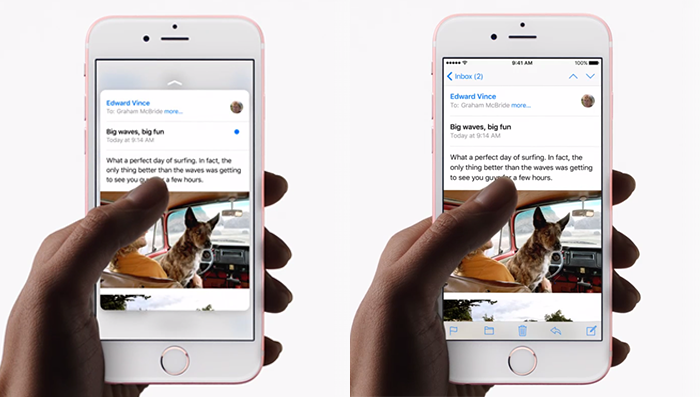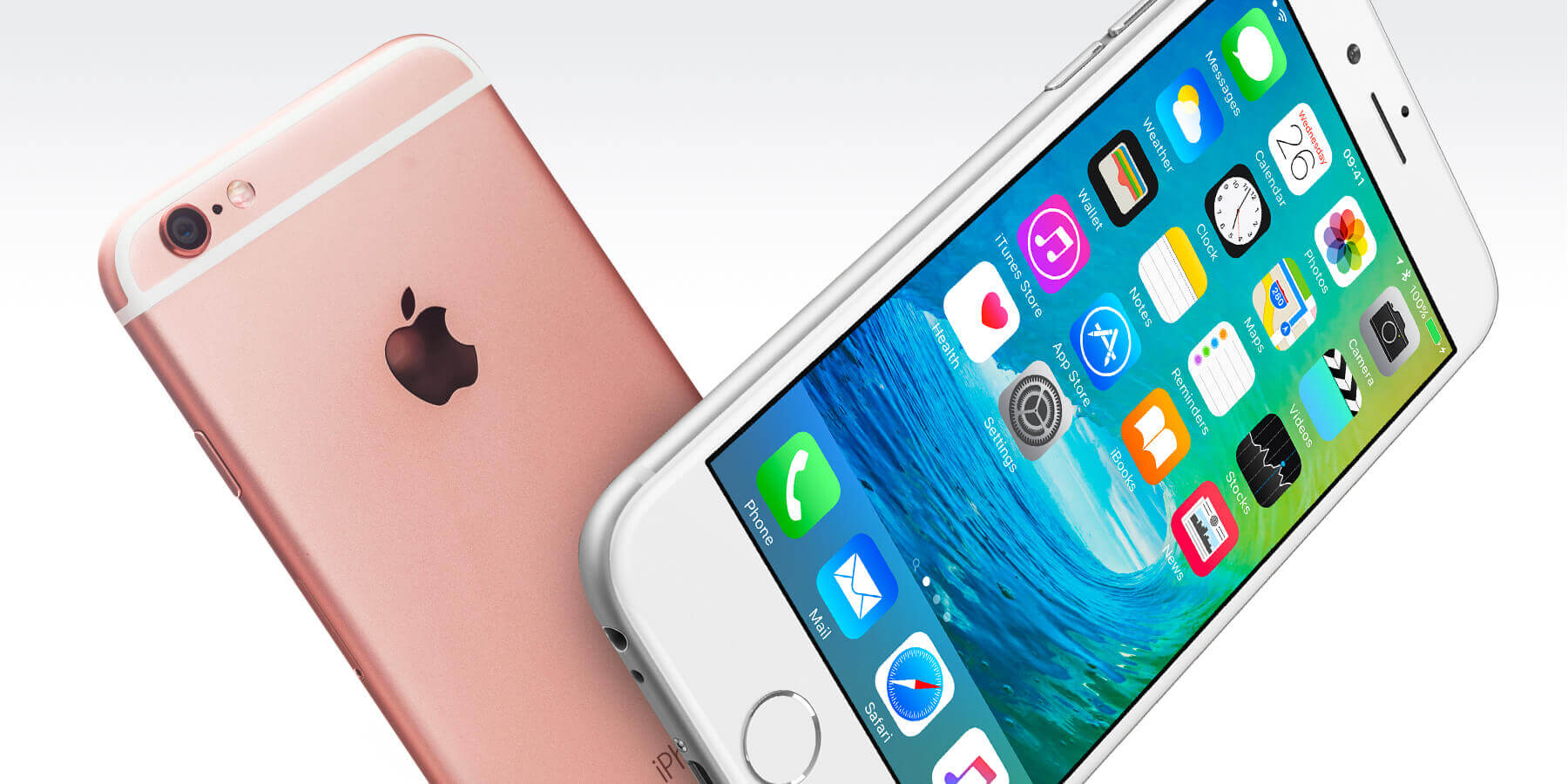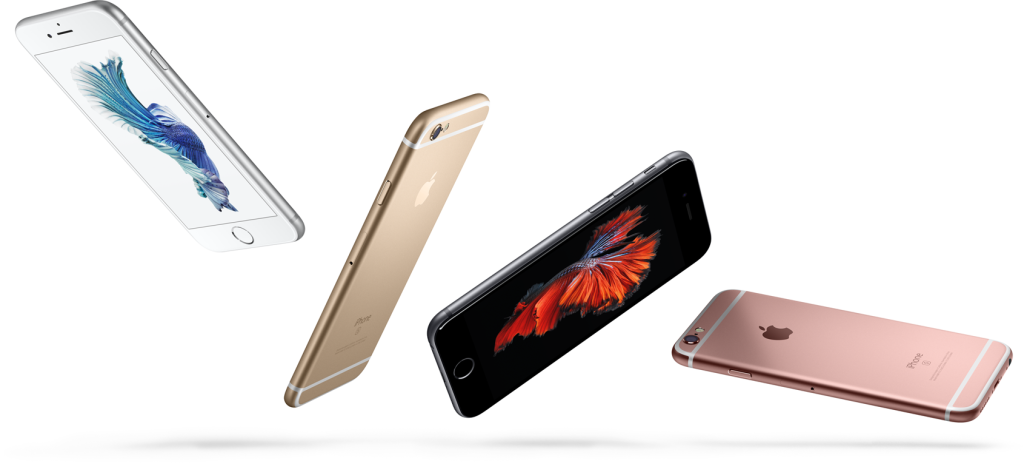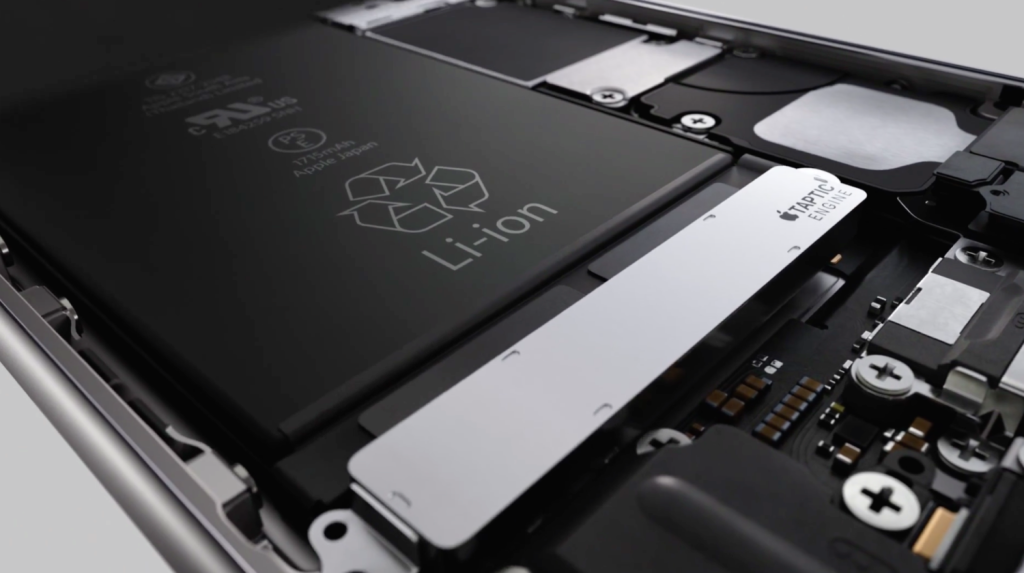Apple tradition dictates that every other year we get an iPhone ’s’ release, and while this is often seen as a lesser update, it’s rarely the case. Let us not forget that Siri was birthed out of the 4s, and TouchID secured our hearts in the 5s. The 6s is no different; the arrival of 3D Touch has the potential to change how we interact with our smartphones.
Furthermore, while the iPhone 6 completely overhauled the design and screen size, the 6s has ripped out the insides and replaced them with much better, more powerful stuff. Despite the reservations to its iterative nature, it seems even this prejudice may have waned judging by the device’s record breaking sales. But Apple is Apple and sales aren’t an indicator of quality; objectively, should you get an iPhone 6s or 6s Plus?
Design
Let’s start with the obvious – these new iPhones look almost exactly the same as their predecessors, and unless you know that there’s a millimeter or two added to the thickness, a different type of aluminum alloy in the casing and a slightly stronger screen, you can remove the ‘almost’ from that statement. Interestingly, we’d say that extra thickness and heaviness from the Taptic Engine tech makes the the phone feel slightly sturdier in the hand. We are about 20% less terrified the device is about to drop from our hand and onto the hard floor every time we pick it up.
3D Touch
3D Touch is the flagship new feature on the iPhone 6s. It uses a Taptic Engine that senses the pressure of a users’ touch, opening up the functionality. This include using 3D Touch to interact with app icons from the home screen, allowing the access of options without entering the app first. Apple describes its use within the Mail app, or in Instagram as ‘peek and pop’, meaning users can press down on a new email, which provides a preview of the message. If it’s something they wish to respond too, then they can push down again and the pressure sensor will allow them to ‘pop’ into the message as normal.

With 3D Touch you can ‘peek and pop’ – an example is lightly pressing on a message in mail, which brings up a preview, if you wish to ‘pop’ into the message, press down again.
The functionality ‘just works’, and takes no time to get used to. However, until third-party developers start discovering interesting ways to use this technology it exists only within Apple’s somewhat limited imagination. Now it takes 1 second less to update to Facebook. Or 1 second less to open the camera and tap the front-facing camera. This is far from groundbreaking, but its typical of Apple’s approach. Take the upgrades to the Notes app in iOS 9 – the kind of functionality that brought; lists, sketching, embedded images is about 4-5 years behind other notes apps.
One of the most useful functions of 3D Touch is the app switcher. Holding down on the left hand side of the screen will allow you to ‘peel’ back the app layers, like turning pages in a book – again, press down again and you’ll ‘pop’ into the App Switcher view. The ‘peek and pop’ is how Apple chooses to utilize this tech, though reportedly the pressure recognition works on a far wider scale meaning the opportunities for developers could be huge.
Hardware
It feels at times that Apple and other smartphone manufacturers remain completely non-sensical in their approach towards battery life. A better battery life is one of those most requested features from users, but despite significant progression in battery technology, smartphone manufacturers seem reluctant to pioneer this. Of course, it costs more to embrace this technology, but in the end it’ll have to be smartphone manufacturers that do it due to their ubiquity. In regards to the 6s, the battery is actually smaller than its predecessor, dropping from 1.810 mAh to 1715 mAh. This is mostly because Apple had to find room for the 3D Touch’s Taptic Engine. Thanks to improvements in iOS 9, Apple says battery life should remain the same as it was before. But that would mean iPhone 6 users running iOS 9 might get better battery life than a newer unit – which seems like the wrong direction to be taking.
Battery is a tough one to assess. On the one hand Apple should incorporate ground-breaking, next level battery technology, but they absolutely don’t. On the other hand, at least battery life has been maintained amongst new features and more power.
New camera
Apple hasn’t upgraded its camera for a couple of iterations, but then it didn’t really have to. Remaining at 8MP suited the iPhone because its actual functionality was strong. On the iPhone the photos looked beautiful, but blown up, or exported into an editor revealed cracks. The 6s upgrade to 12MP has put the final nail in the coffin of your standard standalone point and clicks. On the device, the photos have an added sparkle and look pretty remarkable.
And it’s not just the main camera that’s been upgraded. Apple is jumping on the selfie train – though it wasn’t the first one to leave the station – iPhone users’ selfies will certainly be the prettiest of the bunch. No, no, we’re not talking duck-pouts or strategic angles, we’re talking quality. The front-facing camera’s 1.2MP quality was fairly appalling, but on the 6s its super-sized 5MP is just the ticket in daylight. At nighttime, it’s touch and go. The ingenuity of using the whole screen as a ‘Retina Flash’ is intriguing, but in practice… it’s blinding. It’ll take you awhile to get used to an entire 4.7in or 5.5in screen screaming at you in bright white, especially if you’d forgotten that the flash was on.

An example of a photo taken on the iPhone 6s. Via Apple
Live photos
What is this voodoo? Moving images; what will they think of next? But seriously, Live Photos are super cool, providing a second and a half of video either side of your still photo. It’s not dissimilar to a GIF, but the quality is much higher, and it has sound. However, they do take up twice as much space as a normal photo (bad luck 16GB users) and aren’t really shareable yet beyond iOS devices running iOS 9 or OS X El Capitan on the Mac. But they do other a neat little snapshot that we feel will only improve in value the longer the feature has been around for. Looking back and seeing a tiny bit of video from last year’s holiday snaps will only ramp up the nostalgia.
Watch the original announcement and unveiling of the Live Photos to see them in action
Super-charged
This is one of the most important bumps to the new iPhone. You may be thinking, if this is so important why is it so low down in this review? Well, it simply isn’t sexy enough. The CPU performance is up to 70 percent faster than the A8 chip in the iPhone 6, while graphics performance is 90 percent faster. There we go. Are you online right now trying to find the best deal for an iPhone 6s? It’s unlikely; and it’s probably glitzy new features like 3D Touch or the upgraded camera that will really get the everyday user going. Having said that, the additional power in the iPhone 6s is hugely important. Any stutters that were present on the 6 are gone. Apps open smoothly, TouchID recognizes your prints twice and fast. Put simply, the fresh air of using a 6s will feel remarkably similar to how Mac-users felt the first time they ditched their PC. That’s the ‘right now’ difference between this device and its predecessor, but its full potential has far from been recognized. And we’re pretty excited about that.
6s Plus
What about the 6s Plus? Just like its predecessor the 6s has a larger cousin. Its 5.5 inch screen is invaluable for some that want the extra real estate for on the go text or image editing, but for the vast majority, the 4.7inch screen more the suffices. What do the Plus users get besides more screen? Mostly, it boils down to image stabilization – however; in practice this feature isn’t worth the extra $ or the extra pocket bulge that will lead some to question whether you have one of those massive iPhones, or simply have small legs.
The Plus is a great piece of kit for those that want something of an iPad for the pocket, and while the larger battery that can fit in the phone is certainly noticeable, you won’t be getting any more processor power in the same way the iPad Pro is specced to tower over the regular iPads.
Conclusion
Apple’s marketing team probably took more than a few late nights in the office to come up with the tagline “The only thing that’s changed is everything”, but is it more than just that – a tagline? To say that everything has changed would be entirely ignoring the general public’s obsession with aesthetics. However, the iPhone 6s has seriously ramped up the benchmarks for sheer power on a smartphone. While the phone may not have changed as much as Apple wants you to think, the playing field certainly has.
If you’re at the end of your upgrade cycle and are considering whether to plump for the 6s, or save yourself a few bucks by getting a 6, we’d say the latter is false economy. The 6s is significantly more powerful than its predecessor and will remain relevant for longer. However, if you’re thinking about breaking and updating earlier, then you may not notice enough benefit from the off. It will take awhile before third party developers truly start taking advantage of the power of the processor and the multi-functionality of 3D Touch. We feel Apple could have done more to make 3D touch more essential, as impressive and revolutionary as it is. That’s where Apple succeeds – in its vision, but if its native apps are anything to go by, the implementation has remained at a base-level. By the time we see true innovation across the board… well… we’ll probably be busy celebrating the release of the iPhone 7.
The iPhone 6s and 6s Plus are available now via Apple as well as various outlets. Price points vary depending on carriers, contracts, packages and region. Both models are available with 16GB, 64GB, or 128GB storage capacity.



